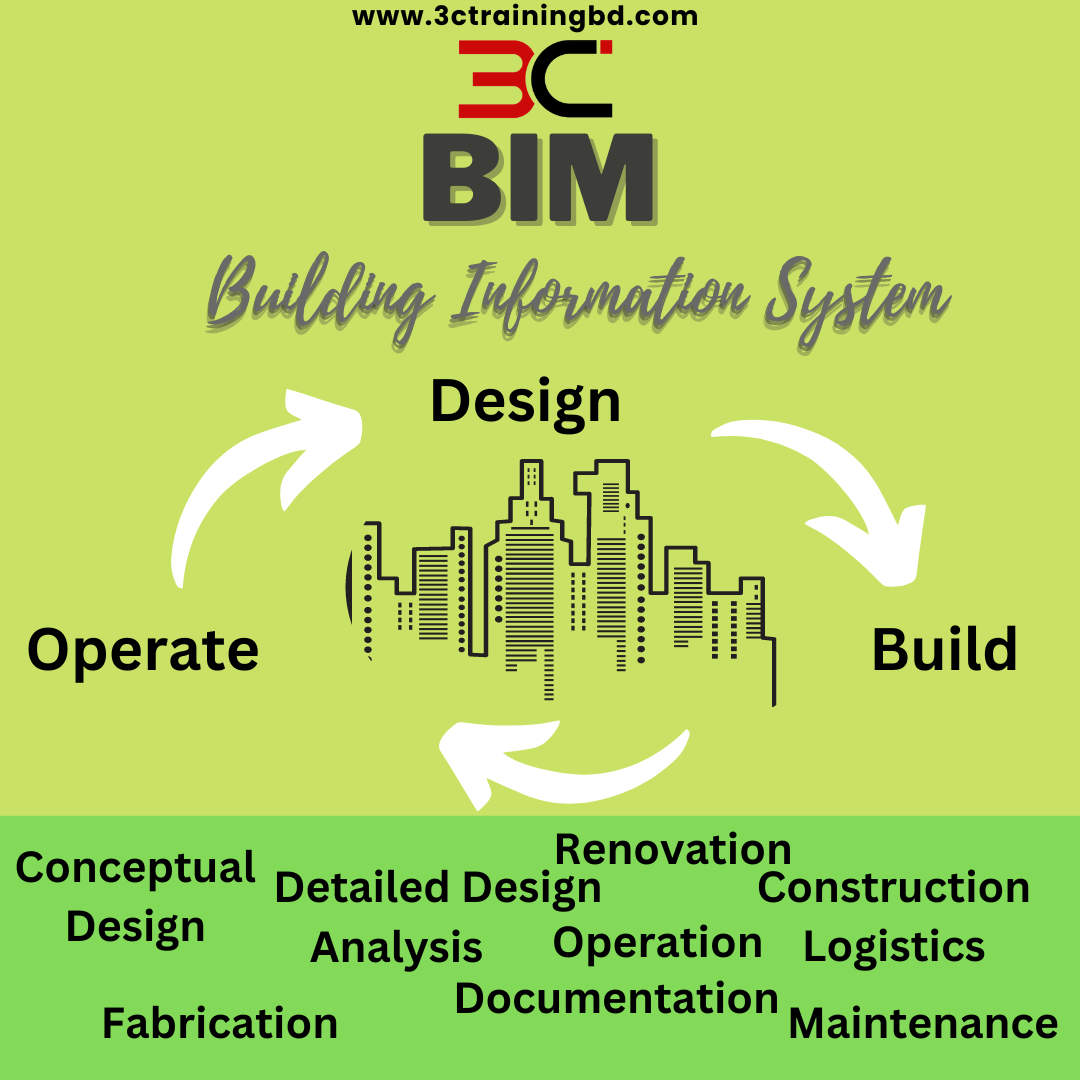It is not easy to build a commercial building. It may sound easy at first, but problems start to appear when the building phase begins. This can result in costly modification orders and delays in the timetable.
On top of that, there are people from various disciplines who are involved in building large commercial construction. These people may include engineers, architects, contractors, business experts, construction workers, etc. Without Building Information Modeling, or BIM, their workflow won’t match, and they may have to work individually until the project is finished, which is incompatible.
BIM is an intelligent software modeling approach that allows these people to cooperate in the design, operation, and construction of a commercial project or building. In today’s discussion, we will learn more about BIM and useful information in general.
What is BIM, or Building Information Model?
Okay, so what is building information modeling? The BIM methodology and accompanying data formats are best specified internationally in the standards of ISO 19650 and 12006.
The model in which we find information to create and manage a construction project across its entire life cycle is known as the Building Information Model or BIM in short.
This model describes the features of every feature of the constructed asset in a coordinated digital manner while employing a set of relevant technologies. The description usually comprises a mixture of informed 3D models and structured data that holds information on the production, execution, and handover of the project.
The Standards of BIM
Several international standards describe the Building Information Model BIM. All these standards provide an informative structure for BIM. Let’s take a look at them –
This part is for data schema. Construction and facilities management businesses use Industry Foundation Classes (IFC) to share data.
This part is the framework for classification. In the UK National Foreword to this standard, Uniclass 2015 is listed as the system for categorization for UK BIM.
This is the methodology for building information modeling and other digital building processes for describing, authoring, and maintaining features in linked data dictionaries.
BIM Objects
Basically, when we combine product data with geometry, we get something called a BIM object. However, it can combine other things as well.
Source: (www.bsigroup.com)
As we can see from the picture, the BIM object provides comprehensive information that defines the product and the geometry that depicts the physical properties. The visualization data, which gives the object a recognized look, and behavioral data (i.e., detection zones), allow the object to position or function exactly like the product.
Primarily, there are two types of objects. They are –
- Component – These are building products with fixed geometrical shapes.
- Layered – These are building products without a fixed size and shape.
The Process of BIM Construction
In order to create a project following BIM, there are some basic stages we need to follow. These stages come one after another. We must follow them accordingly to maintain BIM for the project. So, let’s get started –
- Design: Architects and engineers may rapidly test prospective designs and uncover flaws by designing the model.
- Planning: Using the model, contractors may generate cost and timing estimations, as well as modifications to the building process.
- Construction: Craftsmen or workers may readily identify jobs and receive real-time updates regarding modifications as long as the model is available.
- Operation: After construction is finished, the facility manager gets access to the model, which is basically generated from the pre-drawings. The model will show all the features and systems of the construction.
Why Is BIM Important?
A BIM model contains the building’s details. The model assists stakeholders in understanding what the building will look like before it is constructed. It is also used in exploring various design possibilities.
Basically, these are the following reasons why you need BIM for your construction –
- Gives an advanced design of the construction before building it.
- Improved visualization of a building’s physical and functional aspects.
- Improved coordination of construction documentation.
- Improved productivity as a result of quick information retrieval.
- It is required to calculate raw materials for construction and tendering accurately.
- Collaboration across disciplines for better insights.
- It helps with analysis to gain information on lighting, structural integrity, and energy consumption.
- It helps to maintain operations like asset tracking, facility management, and predictive maintenance in the future.
The Advantages of BIM
There is no doubt that building information modeling is one of the most essential building technology advances. Why? It is because of its numerous safety, economic, and efficiency benefits.
So, let’s get to know some uses and advantages of bim in the construction industry –
- Detecting Problems Early: Conflicting aspects in the design of the construction are detected in the modeling phase. This can save you from costly revisions during construction.
- Improved Scheduling: Project pieces may be scheduled more effectively with business information modeling. This will eventually allow for more methodical schedules.
- Emphasize Focus: The program identifies tasks that can be automated easily. This allows staff to focus on specialized duties.
- Automated Construction: BIM software generates workflows automatically, and any modifications made during construction update the procedure for every worker instantly.
- Increased Safety: Workers have immediate access to particular information about each activity, which increases their awareness and attention to any possible risks.
What is Autodesk Revit?
Autodesk Revit is a popular software for designing and documenting projects that are related to civil construction. It is now a must for any professional wishing to work in architecture, engineering, or interior design.
In addition, the resources of Revit are fully parameterized and aligned with the Building Information Modeling paradigm. Compared to CAD software, Revit architecture provides more agility and accuracy for any construction project.
There are 2 versions of the Revit software. They are –
- Standard Version – You will get to use all the features and tools for a premium price.
- LT Version – You will get to use limited features and tools for a significantly lower price.
Revit Tutorials and Courses
Now that you know what is Revit, you should also know how to learn it. There are many Revit tutorials online that will give you valuable Revit learning tips. You will learn Revit from these tutorials along with knowing its features of it. Popular online courses and certification providers like Udemy offer useful courses to learn Revit.
How to Find BIM or Revit Jobs?
Finding a BIM job depends on a lot of things. Only having skills in Revit is not enough. Some firms may offer BIM jobs for only training purposes, whereas some will require top-level BIM experts with years of professional experience.
Moreover, it also depends on the local market. You may work as an engineer, designer, craftsman, or an in-house trainer; your skill will matter in finding a better BIM job. Only having skills in Revit software rather than professional experience will make the process of finding a job difficult.
Just keep an open mind and keep gaining experience. There will be no shortage of opportunities. You can also look for BIM internships if you are a beginner. This will help you understand the job market and give you some real-life experience that will improve your resume.
FAQ
- What is the difference between Revit and AutoCAD?
Autocad is more like a general software for designing typical graphic works. On the other hand, Revit is dedicated to civil construction. With Revit, you can design walls and layers easily. In addition to that, you can also set the thickness, material, and number of those elements.
You should also know that AutoCAD is a Computer Aided Design software, whereas Revit is known as a BIM software.
- Revit vs BIM, what is the difference?
In a nutshell, BIM is a procedure or method of construction. It is required in the AEC industry to produce better outcomes when different team members of the project collaborate with each other by interfacing with newer technologies. On the other hand, Revit is a piece of software that is based on the BIM method. This tool helps the user to ease the process of creating an intelligent model.
- Is BIM better than CAD?
You should know that both of these models give the infrastructure a geometric expression. To capture the metadata, relationships, and behaviors inherent to actual building components, BIM offers more than just geometry. As a result, BIM can always provide an improved project outcome that is not possible in 3D CAD modeling.
Conclusion
With the blessings of BIM, a lot of eye-catching structures have been built. They would not have been conceivable if BIM had not been invented. It has fostered innovation in building procedures with incredible designs, resulting in cost-effective structures.
Even with these huge advancements in construction procedures, heavy equipment is still required by construction workers for complex and large construction projects. Tools like Revit that rely on BIM are gradually decreasing the use of heavy equipment. Additionally, these tools provide BIM workers with opportunities and enable construction that would otherwise be impossible.

